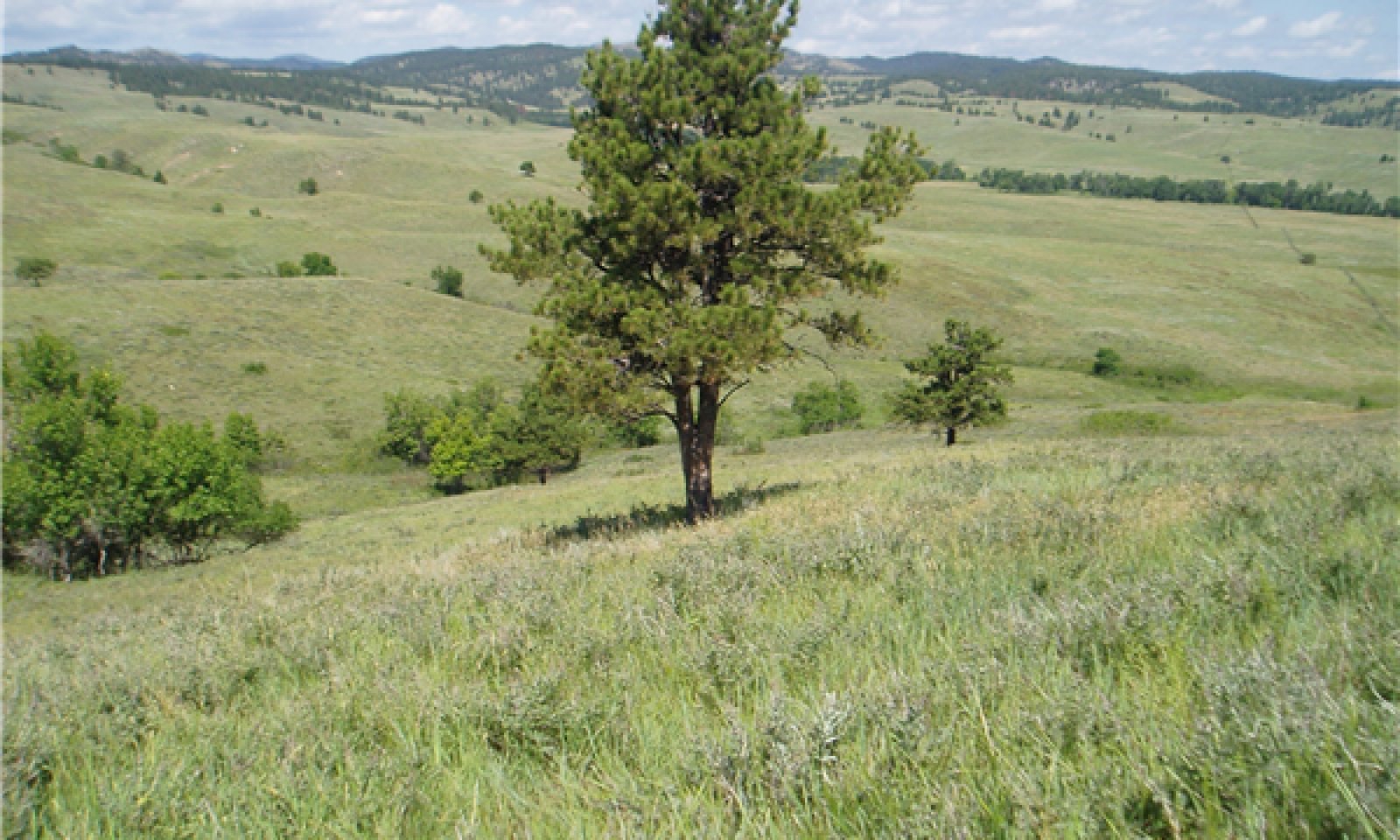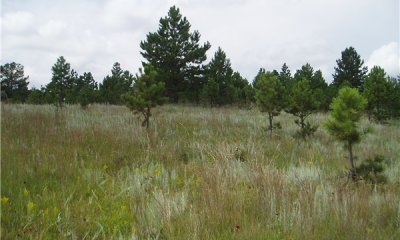
Stony Hills
Scenario model
Current ecosystem state
Select a state
Management practices/drivers
Select a transition or restoration pathway
- Transition T1A More details
- Transition T1B More details
- Transition T2A More details
- Restoration pathway R3A More details
- Transition T3A More details
-
No transition or restoration pathway between the selected states has been described
Target ecosystem state
Select a state
State 1
Reference State



Description
The Reference State represents what is believed to show the natural range of variability that dominated the dynamics of the ecological site prior to European settlement. This site in the Reference State (1.0) is dominated by warm-season grasses, with cool-season grasses being subdominant. In pre-European times, the primary disturbance mechanisms for this site in the reference condition included occasional fire and grazing by large ungulates. Timing of fires and grazing coupled with weather events dictated the dynamics that occurred within the natural range of variability. Taller cool- and warm-season grasses would have declined and a corresponding increase in short statured grass and grass-like species would have occurred. Today, a similar state can be found on areas that are properly managed with grazing and/or prescribed burning, and sometimes on areas receiving occasional short periods of rest. The Reference State (1.0) is very susceptible to invasion of non-native cool-season grasses and the encroachment of conifers from adjacent sites.
Submodel
Description
The Native/Invaded State is dominated by native cool- and warm-season grasses, with a subdominant component of non-native cool-season grasses. It can be found on areas that would appear to be properly managed with grazing and possibly prescribed burning. Extended periods of non-use and no fire, or long-term light grazing can result in the invasion and establishment of non-native cool-season grasses onto this site. If the native cool-season grasses decline, a corresponding increase of non-native cool-season grasses can occur. The non-native cool-season grasses will include, Kentucky bluegrass, smooth brome, cheatgrass, and field brome.
Submodel
Description
This Conifer State consists of areas where tree canopy increases to a level that impedes the reproductive capability of the major native perennial grass species. The increase in conifer canopy is a result of encroachment from forest sites, or from rangeland sites that have been invaded; and the disruption of the natural historic fire regime that kept the trees in an immature stage. This state is reached when mature conifer canopy reaches approximately 25 percent or more. The canopy typically is dominated by ponderosa pine, but Rocky Mountain juniper may also be present in varying amounts. It appears the Conifer State is most likely to occur on the Shirttail soil series and, to a lesser extent, on Hilger.
With continued long-term fire suppression and no brush management, the conifer canopy can eventually become closed with much of the herbaceous understory lost. This loss is partly driven by the interception of precipitation. Ponderosa pine canopy can significantly reduce precipitation reaching the ground due to canopy interception. In areas with intermediate and dense canopy’s, the expected reduction can reach 30 percent (Wrage, 1994).
Submodel
Mechanism
The invasion of non-native cool-season grasses; continuous seasonal grazing (stocking levels above carrying capacity for extended portions of the growing season, and at the same time of year each year, typically beginning early in the season); long-term light grazing; or no use and no fire will transition the Reference State (1.0) to the Native/Invaded State (2.0).
Mechanism
Long-term no fire and the encroachment and establishment of conifers will transition the Reference State (1.0) to the Conifer State (3.0).
Mechanism
Encroachment or an increase in canopy cover of native coniferous tree species, and no fire will lead the Native/Invaded State (2.0) over a threshold to the Conifer State (3.0). This threshold will be crossed when tree canopy reaches approximately 25 percent or more of mature trees.
Mechanism
Fire; or prescribed burning or mechanical brush management in conjunction with long-term prescribed grazing may lead this plant community across a threshold back to the Reference State (1.0). This would have to take place before the trees reach maturity and are still susceptible to fire, and reproductive propagules of the perennial grasses are still present. After trees reach maturity, a stand removing fire or tree removal would be needed to move the Conifer State (3.0) over the threshold back to the Reference State (1.0). This process can take an extended period of time (5 to 10 years), especially if mid-stature cool and warm-season species make up only a small percentage of the plant community.
Relevant conservation practices
| Practice | External resources |
|---|---|
|
Brush Management |
|
|
Prescribed Burning |
|
|
Prescribed Grazing |
Mechanism
Invasion of non-native cool-season grasses; fire; mechanical brush management; or prescribed burning to remove conifers will transition the Conifer State (3.0) to the Native/Invaded State (2.0). Once conifers are removed, prescribed grazing will be required to facilitate herbaceous recovery and maintenance.
Relevant conservation practices
| Practice | External resources |
|---|---|
|
Brush Management |
|
|
Prescribed Burning |
|
|
Prescribed Grazing |
Model keys
Briefcase
Add ecological sites and Major Land Resource Areas to your briefcase by clicking on the briefcase (![]() ) icon wherever it occurs. Drag and drop items to reorder. Cookies are used to store briefcase items between browsing sessions. Because of this, the number of items that can be added to your briefcase is limited, and briefcase items added on one device and browser cannot be accessed from another device or browser. Users who do not wish to place cookies on their devices should not use the briefcase tool. Briefcase cookies serve no other purpose than described here and are deleted whenever browsing history is cleared.
) icon wherever it occurs. Drag and drop items to reorder. Cookies are used to store briefcase items between browsing sessions. Because of this, the number of items that can be added to your briefcase is limited, and briefcase items added on one device and browser cannot be accessed from another device or browser. Users who do not wish to place cookies on their devices should not use the briefcase tool. Briefcase cookies serve no other purpose than described here and are deleted whenever browsing history is cleared.
Ecological sites
Major Land Resource Areas
The Ecosystem Dynamics Interpretive Tool is an information system framework developed by the USDA-ARS Jornada Experimental Range, USDA Natural Resources Conservation Service, and New Mexico State University.


